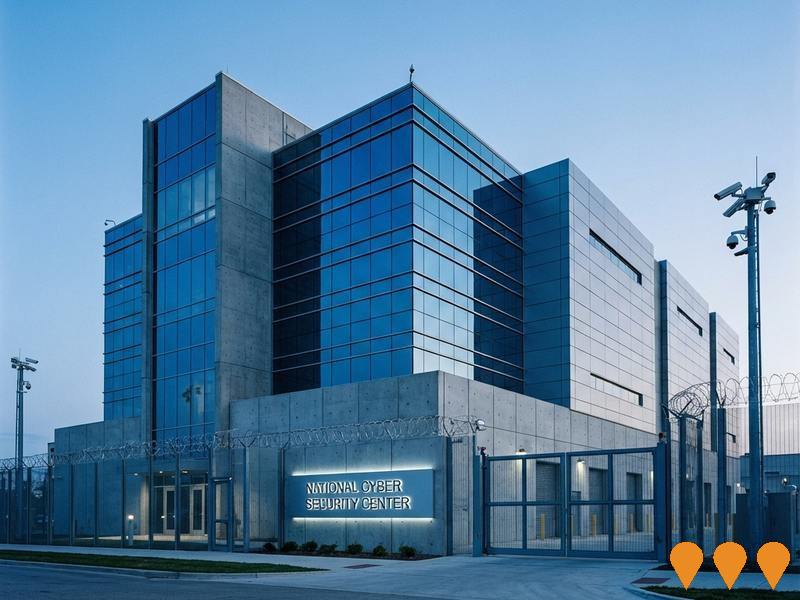Chart Color Schemes
est. as @ -- *
ABS ERP | -- people | --
2021 Census | -- people
Sales Activity
Curious about local property values? Filter the chart to assess the volume and appreciation (including resales) trends and regional comparisons, or scroll to the map below view this information at an individual property level.
Find a Recent Sale
Sales Detail
Population
Kyogle is positioned among the lower quartile of areas assessed nationally for population growth based on AreaSearch's assessment of recent, and medium term trends
Kyogle's population, as of November 2025, is approximately 7,842 people. This figure represents an increase of 231 individuals, a 3.0% rise from the 2021 Census which recorded a population of 7,611. The increase was inferred from the estimated resident population of 7,711 in June 2024 and an additional 37 validated new addresses since the Census date. This results in a population density of 4.0 persons per square kilometer. Kyogle's growth rate exceeded that of its SA3 area (0.5%), positioning it as a regional growth leader. Overseas migration contributed approximately 50.6% to overall population gains during recent periods.
AreaSearch uses ABS/Geoscience Australia projections for each SA2 area, released in 2024 with a base year of 2022. For areas not covered by this data, NSW State Government's SA2 level projections from 2022 with a base year of 2021 are utilized. Growth rates by age group from these aggregations are applied to all areas for the years 2032 to 2041. By 2041, according to this methodology, Kyogle's population is projected to decrease by 809 persons. However, specific age cohorts are expected to grow; notably, the 85 and over age group is anticipated to expand by 143 people.
Frequently Asked Questions - Population
Development
Residential development activity is lower than average in Kyogle according to AreaSearch's national comparison of local real estate markets
Kyogle averaged approximately 17 new dwelling approvals annually over the past five financial years, from FY21 to FY25, with a total of 86 homes approved during this period. In FY26, up until now, 8 dwellings have been approved. On average, each dwelling has resulted in the addition of 2 new residents per year over these five years, indicating strong demand which supports property values.
The average construction cost value for new homes was $339,000 during this period. This financial year, $7.5 million worth of commercial development approvals have been recorded, suggesting a limited focus on commercial development in the area. Compared to the Rest of NSW, Kyogle records about three-quarters the building activity per person. Nationally, it places among the 45th percentile of areas assessed, indicating more limited choices for buyers and supporting demand for existing properties.
However, building activity has accelerated in recent years. Recent construction comprises 86.0% detached houses and 14.0% townhouses or apartments, preserving the area's low density nature with a focus on detached housing which attracts space-seeking buyers. The estimated population per dwelling approval is 374 people, reflecting its quiet, low activity development environment. Given stable or declining population forecasts, Kyogle may experience less housing pressure in the future, creating favourable conditions for buyers.
Frequently Asked Questions - Development
Infrastructure
Kyogle has emerging levels of nearby infrastructure activity, ranking in the 21stth percentile nationally
Changes to local infrastructure significantly impact an area's performance. AreaSearch identified five projects that may affect this region. Notable initiatives include Summerville Solar Farm, Lismore Flood Restoration - Roads and Bridges (scheduled from 2021-07-01 to 2023-06-30), Lismore Flood Recovery and Resilience Program (commencing 2022-05), and Urbenville Water Treatment Plant Upgrade (planned for completion by 2024).
Professional plan users can use the search below to filter and access additional projects.
INFRASTRUCTURE SEARCH
 Denotes AI-based impression for illustrative purposes only, not to be taken as definitive under any circumstances. Please follow links and conduct other investigations from the project's source for actual imagery. Developers and project owners wishing us to use original imagery please Contact Us and we will do so.
Denotes AI-based impression for illustrative purposes only, not to be taken as definitive under any circumstances. Please follow links and conduct other investigations from the project's source for actual imagery. Developers and project owners wishing us to use original imagery please Contact Us and we will do so.
Frequently Asked Questions - Infrastructure
Queensland Energy Roadmap Infrastructure
The Queensland Energy Roadmap 2025 is the State Government's strategic plan to deliver affordable, reliable, and sustainable energy. Replaces the former Energy and Jobs Plan, focusing on extending the life of state-owned coal assets, a $1.6 billion Electricity Maintenance Guarantee, and the $400 million Queensland Energy Investment Fund. Key infrastructure includes the CopperString transmission line and new gas-fired generation, while the Pioneer-Burdekin Pumped Hydro project has been cancelled in favor of smaller storage options.
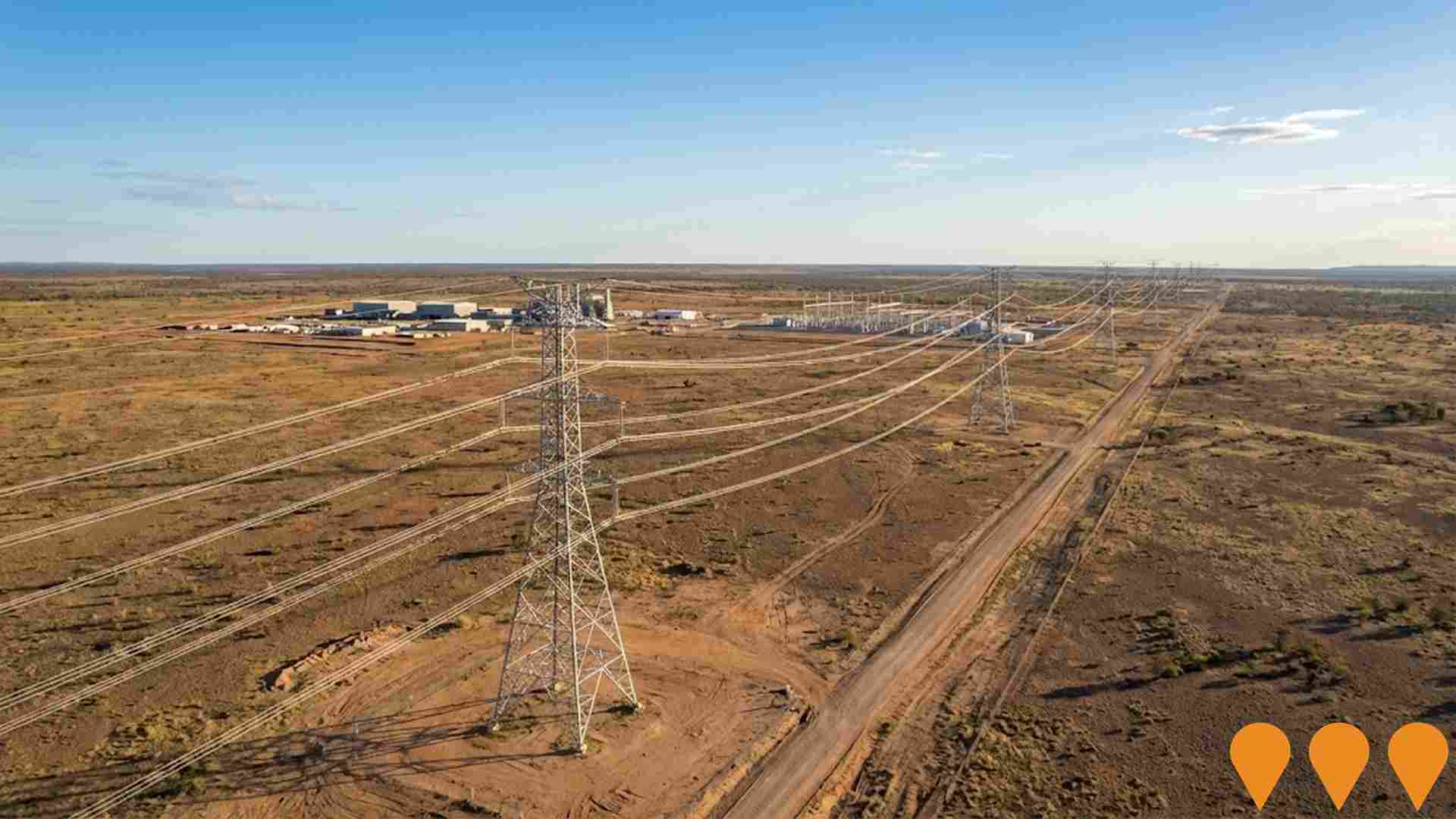
Queensland Energy and Jobs Plan
The Queensland Energy and Jobs Plan, initially a comprehensive plan for renewable energy and job creation, has been superseded by the Queensland Energy Roadmap 2025 by the new government (October 2025). The Roadmap focuses on energy affordability, reliability, and sustainability by leveraging existing coal and gas assets, increasing private sector investment in renewables and storage (targeting 6.8 GW of wind/solar and 3.8 GW of storage by 2030), and developing a new Regional Energy Hubs framework to replace Renewable Energy Zones. The initial $62 billion investment pipeline is now primarily focused on implementing the new Roadmap's priorities, including an estimated $26 billion in reduced energy system costs compared to the previous plan. The foundational legislation is the Energy Roadmap Amendment Bill 2025, which is currently before Parliament and expected to pass by December 2025, formally repealing the previous renewable energy targets. Key infrastructure projects like CopperString's Eastern Link are still progressing. The overall project is in the planning and legislative amendment phase under the new policy.
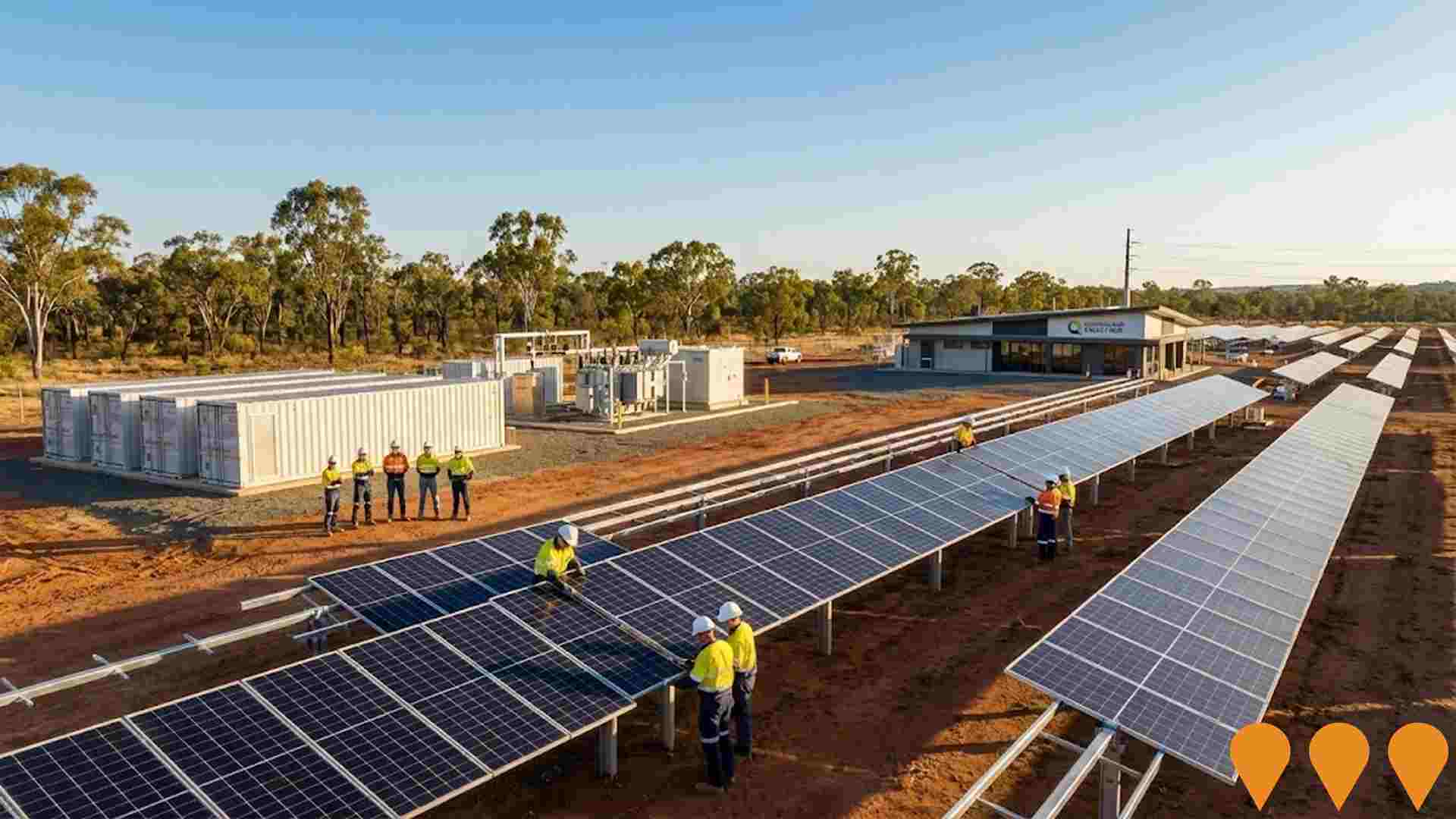
Brisbane 2032 Olympic and Paralympic Games Infrastructure Program
The $7.1 billion infrastructure program for the Brisbane 2032 Olympic and Paralympic Games includes a new ~60,000-seat main stadium at Victoria Park (hosting opening/closing ceremonies and athletics), a new Brisbane Arena (Roma Street or alternate location), venue upgrades to QSAC and Suncorp Stadium, new and upgraded aquatic centres, athletes' villages, and supporting transport improvements across South East Queensland. The program emphasises existing venues where possible with targeted new builds for legacy benefit.

Inland Rail - Queensland Sections
The Queensland sections of Inland Rail form part of the 1,700km Melbourne-to-Brisbane freight railway. Key active segments in Queensland include Calvert to Kagaru (C2K), Helidon to Calvert (H2C), Gowrie to Kagaru (G2K overall), Border to Gowrie (B2G via NSW), and the connection at Ebenezer. The former Kagaru to Acacia Ridge and Bromelton section has been cancelled; the line now connects to the interstate network at Kagaru. Multiple sections are now under construction or in detailed design and early works as of late 2025.

Lismore Flood Recovery and Resilience Program
Multi-year program to repair and upgrade community infrastructure damaged in the February/March 2022 floods across Lismore and surrounding areas. Delivered jointly by Lismore City Council, the NSW Reconstruction Authority and the Australian Government, it includes road and bridge repairs, levee upgrades, pump stations, drainage improvements, park restoration, water and sewer assets, and betterment works to increase future flood resilience.

Brisbane to Gold Coast Transport Corridor Upgrades (Corridor Program)
A program of major transport upgrades along the Brisbane to Gold Coast corridor, incorporating multiple individual projects (such as the **Logan and Gold Coast Faster Rail** and the **Coomera Connector (M9)**) to enhance connectivity, reduce congestion, and support population growth. Components are at various stages, with key rail and road projects currently in **Construction** and **Planning** phases.
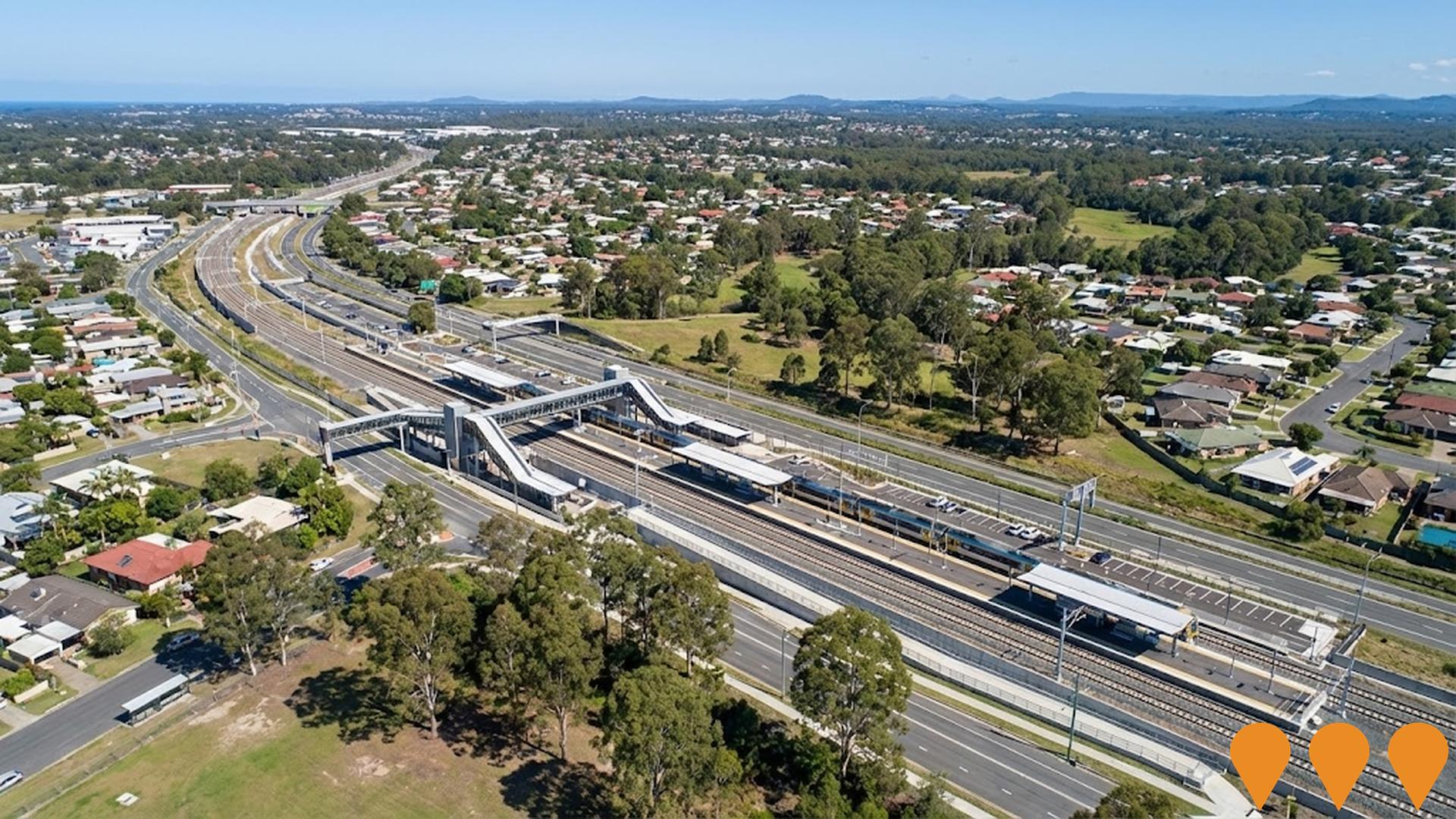
Building Future Hospitals Program
Queensland's flagship hospital infrastructure program delivering over 2,600 new and refurbished public hospital beds by 2031-32. Includes major expansions at Ipswich Hospital (Stage 2), Logan Hospital, Princess Alexandra Hospital, Townsville University Hospital, Gold Coast University Hospital and multiple new satellite hospitals and community health centres.

Summerville Solar Farm
A 90MW solar farm with a 360MWh battery energy storage system spanning 240 hectares, featuring 215,000 PV panels and capable of powering 36,000 homes. The project will reduce greenhouse gas emissions by over 139,000 tonnes annually and includes a $3.1 million community benefit fund for Richmond Valley Council.
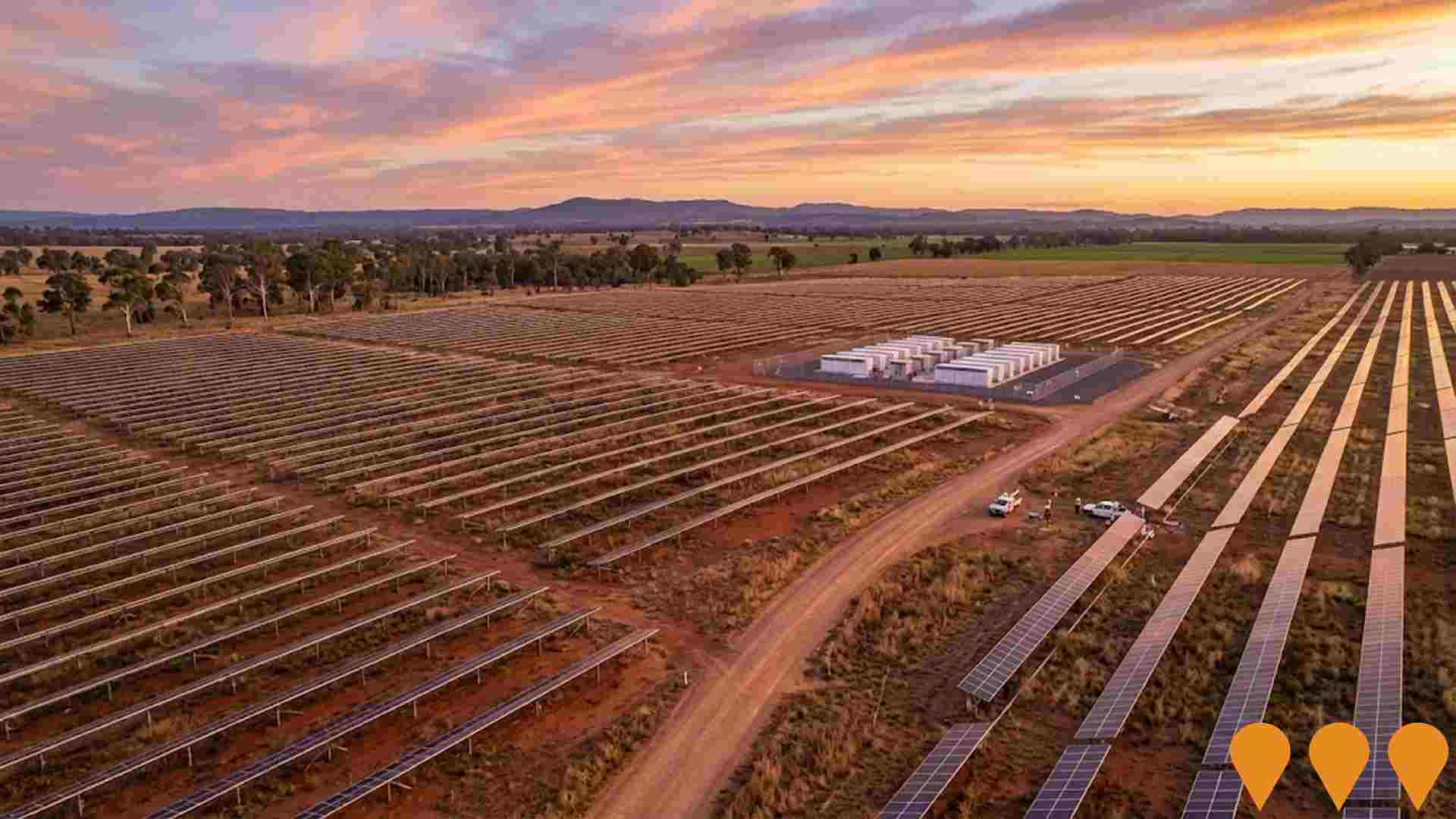
Employment
AreaSearch assessment indicates Kyogle faces employment challenges relative to the majority of Australian markets
Kyogle has an unemployment rate of 5.3% as of June 2025, with 3,038 residents employed. This rate is 1.7% higher than the Rest of NSW's rate of 3.7%.
Workforce participation in Kyogle is lower at 47.4%, compared to Rest of NSW's 56.4%. Key industries of employment among residents are health care & social assistance, agriculture, forestry & fishing, and construction. Agriculture, forestry & fishing is particularly notable with employment levels at 2.6 times the regional average. However, public administration & safety is under-represented, with only 4.6% of Kyogle's workforce compared to 7.5% in Rest of NSW.
Over the year ending June 2025, labour force levels decreased by 4.8%, and employment declined by 3.5%, resulting in a fall of 1.3 percentage points in unemployment rate. In contrast, Rest of NSW saw employment fall by 0.1%, labour force expand by 0.3%, and unemployment rise by 0.4 percentage points. According to Jobs and Skills Australia's national employment forecasts from May 2025, national employment is projected to grow by 6.6% over five years and 13.7% over ten years. Applying these projections to Kyogle's employment mix suggests local growth of approximately 6.0%% over five years and 13.0% over ten years.
Frequently Asked Questions - Employment
Income
Income metrics place the area in the bottom 10% of locations nationally according to AreaSearch analysis
AreaSearch's latest postcode level ATO data for financial year 2022 shows Kyogle's median income among taxpayers is $37,415. The average income in Kyogle during this period was $45,800. This is below the national average. In comparison, Rest of NSW had a median income of $49,459 and an average of $62,998. Based on Wage Price Index growth of 12.61% since financial year 2022, estimated median income in Kyogle as of September 2025 would be approximately $42,133. The estimated average income for the same period is $51,575. Census data indicates household, family and personal incomes in Kyogle all fall between the 4th and 6th percentiles nationally. Income brackets show that the predominant cohort spans 29.4% of locals (2,305 people) with incomes in the $400 - $799 category. This differs from patterns across the broader area where the $1,500 - $2,999 bracket dominates with 29.9%. After housing costs, 86.4% of income remains in Kyogle, ranking at only the 6th percentile nationally.
Frequently Asked Questions - Income
Housing
Kyogle is characterized by a predominantly suburban housing profile, with above-average rates of outright home ownership
The dwelling structure in Kyogle, as per the latest Census, was 95.2% houses and 4.8% other dwellings. In comparison, Non-Metro NSW had 86.8% houses and 13.2% other dwellings. Home ownership in Kyogle stood at 51.9%, with mortgaged dwellings at 27.1% and rented ones at 21.0%. The median monthly mortgage repayment was $1,300, lower than Non-Metro NSW's average of $1,452. The median weekly rent in Kyogle was $270, compared to Non-Metro NSW's $300. Nationally, Kyogle's mortgage repayments were significantly lower at $1,300 versus the Australian average of $1,863, and rents were substantially below the national figure of $375.
Frequently Asked Questions - Housing
Household Composition
Kyogle features high concentrations of lone person households, with a lower-than-average median household size
Family households constitute 64.3% of all households, including 19.5% couples with children, 31.4% couples without children, and 12.5% single parent families. Non-family households account for 35.7%, with lone person households at 32.3% and group households comprising 3.6%. The median household size is 2.3 people, smaller than the Rest of NSW average of 2.4.
Frequently Asked Questions - Households
Local Schools & Education
Educational outcomes in Kyogle fall within the lower quartile nationally, indicating opportunities for improvement in qualification attainment
Kyogle faces educational challenges, with university qualification rates at 18.0%, significantly below NSW's average of 32.2%. This discrepancy presents both a challenge and an opportunity for targeted initiatives. Bachelor degrees are the most prevalent at 13.1%, followed by postgraduate qualifications (2.7%) and graduate diplomas (2.2%). Vocational skills are prominent, with 40.8% of residents aged 15+ holding credentials such as advanced diplomas (11.3%) and certificates (29.5%).
Educational participation is high at 28.6%, including primary education (11.0%), secondary education (8.4%), and tertiary education (2.6%). Kyogle operates a robust network of 9 schools educating approximately 1,114 students, with typical Australian school conditions (ICSEA: 955) and balanced educational opportunities. The educational mix includes 6 primary, 1 secondary, and 2 K-12 schools.
Frequently Asked Questions - Education
Schools Detail
Nearby Services & Amenities
Transport
Transport servicing is low compared to other areas nationally based on assessment of service frequency, route connectivity and accessibility
Kyogle has 450 active public transport stops, offering a mix of train and bus services. These stops are served by 38 individual routes, collectively providing 494 weekly passenger trips. Residents have excellent transport accessibility, with an average distance of 160 meters to the nearest stop.
Service frequency averages 70 trips per day across all routes, equating to approximately one weekly trip per stop.
Frequently Asked Questions - Transport
Transport Stops Detail
Health
Health performance in Kyogle is well below average with prevalence of common health conditions notable across both younger and older age cohorts
Kyogle faces significant health challenges, as indicated by health data. Both younger and older age groups have notable prevalence of common health conditions.
Only approximately 47% (~3,654 people) of Kyogle's total population has private health cover, which is lower than the national average of 55.3%. The most prevalent medical conditions in the area are arthritis (11.1%) and mental health issues (9%). Around 62% of residents report being free from medical ailments, comparable to Rest of NSW at 61.9%. Kyogle has a higher proportion of seniors aged 65 and over (29%, or 2,278 people), compared to Rest of NSW's 22.9%. Despite this, health outcomes among seniors in Kyogle are above average and better than the general population in terms of health metrics.
Frequently Asked Questions - Health
Cultural Diversity
Kyogle is considerably less culturally diverse than average when assessed alongside AreaSearch's national rankings for language and cultural background related metrics
Kyogle had a cultural diversity index below the average, with 88.8% citizens, 89.1% born in Australia, and 96.3% speaking English only at home. Christianity was the predominant religion, accounting for 51.0%, slightly lower than the Rest of NSW's 52.4%. The top three ancestry groups were English (31.7%), Australian (30.3%), and Irish (10.6%).
Notably, Scottish ancestry was higher at 9.0% compared to the regional average of 8.5%, while Australian Aboriginal was lower at 3.9% versus 4.6%. German ancestry was equally represented at 3.4%.
Frequently Asked Questions - Diversity
Age
Kyogle ranks among the oldest 10% of areas nationwide
Kyogle's median age is 51 years, which is significantly higher than the Rest of NSW average of 43 and considerably older than the Australian median of 38. The 65-74 cohort is notably over-represented in Kyogle at 18.0%, compared to the Rest of NSW average, while the 25-34 age group is under-represented at 7.3%. This concentration of the 65-74 cohort is well above the national average of 9.4%. Post-2021 Census data shows that the 75 to 84 age group has grown from 7.1% to 8.3%, and the 65 to 74 cohort has increased from 16.9% to 18.0%. Conversely, the 55 to 64 cohort has declined from 18.6% to 16.5%, and the 45 to 54 group has dropped from 12.2% to 11.0%. By 2041, Kyogle is expected to see notable shifts in its age composition. The 85+ group will grow by 60%, reaching 345 people from 215. The aging population dynamic is clear, with those aged 65 and above comprising all of the projected growth. Conversely, both the 0-4 and 35-44 age groups are expected to see reduced numbers.



